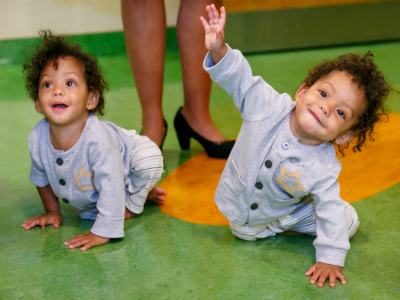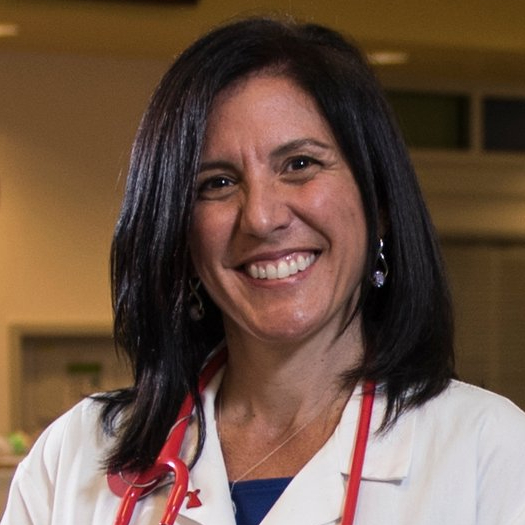
Tyson and Tyler's Story

Twelve weeks into her pregnancy, Tokoya Proctor and her husband, Raymond, learned Tokoya was carrying conjoined twin boys.
“We were told the majority of conjoined twins don’t survive gestation, and terminating the pregnancy was an option,” Tokoya says. “Raymond and I were devastated. We weren’t experts on conjoined twins, but the babies seemed to have the necessary anatomy to make it through pregnancy, so we chose to keep going.”
A high-risk obstetrician referred the family to Children’s National in April, where fetal echocardiogram, fetal ultrasound, and fetal magnetic resonance imaging (MRI) allowed Mary Donofrio, M.D., Director of the Fetal Heart Program at Children’s National, to get a better idea of the nature of Tyson and Tyler Proctor’s anatomy and the extent of their attachment to each other.
“A shared heart makes the likelihood of successful separation quite low, so it was good to see that both boys had separate, four-chambered hearts,” Dr. Donofrio says. “Tyson had tetralogy of Fallot; I could see that clearly. Tyler was harder to image. At first, I was afraid he had a heart defect as well, but subsequent imaging revealed that wasn’t the case.”
The boys, joined along the chest and abdomen, shared a liver. Using specialized fetal MRI techniques, the surgeons were able to determine that if the babies made it to delivery, they would likely be able to divide the liver and separate the twins.
Putting a Plan in Place
Tokoya visited Children’s National throughout the spring and summer for follow-up cardiac imaging of the twins in utero, while Dr. Donofrio led a team that included cardiac intensivists, anesthesiologists, general surgeons, plastic surgeons, cardiac surgeons, neonatologists and radiologists in planning the separation surgery.
“Imaging couldn’t tell us everything, so we had to consider a lot of unknowns: How big would the chest and abdominal wall defect be? What would the orientation of Tyson’s heart within his chest be like? How would the bony structure of the boys’ chest wall look?” says Pranava Sinha, M.D., congenital cardiac surgeon at Children’s National. “We also had to account for the fact that the babies would grow—perhaps not at the same rate—between the day of imaging and the day of surgery, and their architecture might change.”
Tokoya gave birth at 35 weeks gestation, on Sept. 8, 2013. The boys were immediately transferred to Children’s National, and the countdown to separation started.
The Power of Many
The surgical care team for the twins used 3-D, MRI-generated, virtual and tangible models of the twins to visualize and analyze the anatomy and performed a simulated separation procedure nearly two months before the actual surgery. Barely a week after the twins were born, the plastic surgeons placed tissue expanders on each of the boys’ sides to allow for skin growth to permit closure after separation using the twins’ own skin.
“The team had to strike a balance between allowing enough time for the skin to grow and operating in a timely manner to prevent Tyson from possibly becoming very sick due to cyanotic spells related to tetralogy of Fallot,” says John Berger, III, M.D., Medical Director of Cardiac Critical Care at Children’s National, who oversaw the twins’ management in the Cardiac Intensive Care Unit. “Every week, the question was: ‘Is this the week we need to operate?’”
Finally, on Oct. 29, 2013, the time was right.
During a nearly twelve-hour procedure, surgeons separated the twins’ chest, abdomen, liver and pericardium. A team of general, plastic and cardiac surgeons reconstructed the chest, abdomen and pericardium for each boy following the separation portion of the surgery.
Tyler went home on Dec. 5, 2013, five weeks after surgery. Five days later, Dr. Sinha repaired Tyson’s tetralogy of Fallot. Tyson followed his brother home later in the winter after recovering from cardiac surgery and a bout with the common cold.
“If you want the best for a child, you have to send him or her to the best—a facility whose physicians are well-versed in everything he or she will need,” Tokoya says. “Children’s National is the best.”


